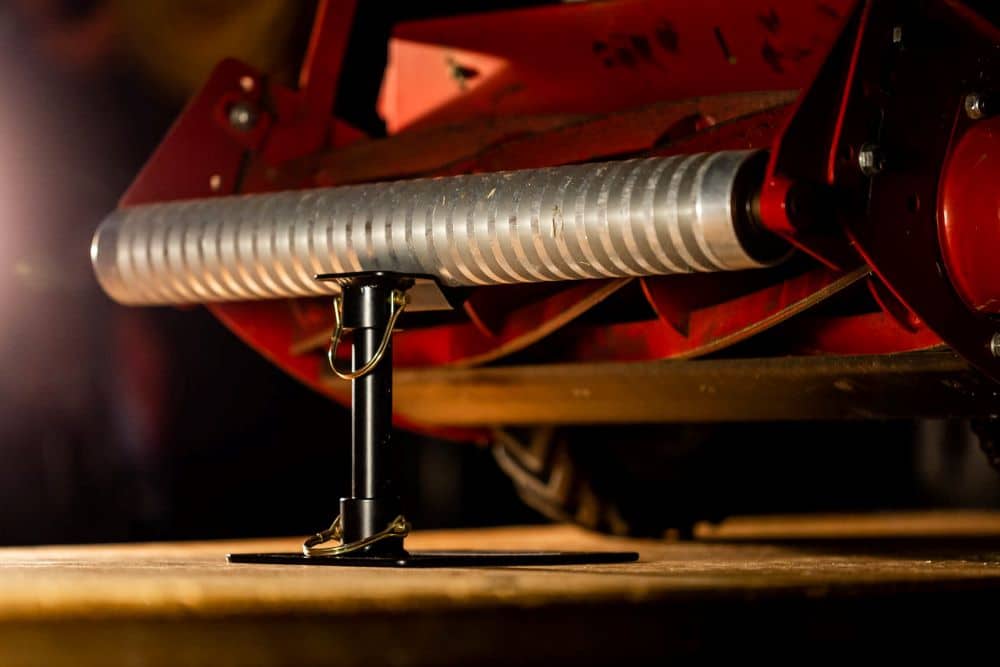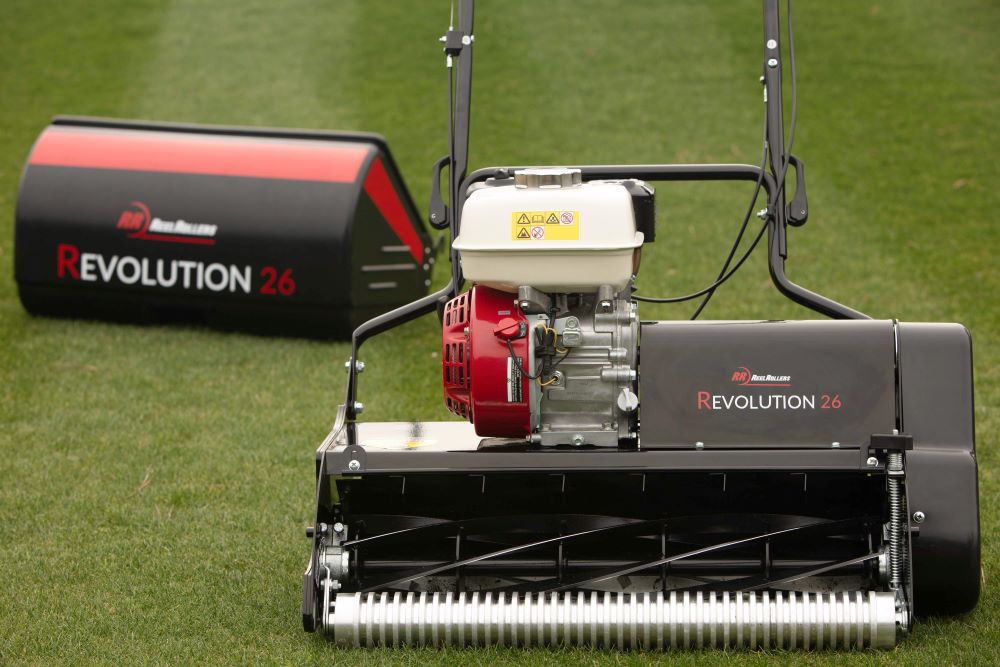
Rapid Shipping
Experienced Team

When it comes to achieving a pristine, professional-quality lawn, the type of mower you choose can make all the difference. While rotary mowers dominate the market for their convenience and versatility, reel mowers offer a level of precision and cut that quality rotary models simply can’t match. Whether you’re a homeowner, a lawn care enthusiast, or someone striving for that golf-course-worthy finish, understanding the differences between reel and rotary mowers can help you make an informed choice.
At Reel Rollers, we supply engine-powered reel mowers and their parts and accessories. They combine the precision cutting ability of a traditional push reel mower with the power of an engine. Brands like ours, Tru Cut, California Trimmer, McLane, and Swardman are popular manufacturers of reel mowers with engines.
A reel mower operates with a rotating set of helical blades mounted on a cylinder (the “reel”), which is driven by the engine. This then turns the reel and powers the wheels or front roller, propelling the mower forward while the reel blades slice the grass cleanly as they pass over a stationary bedknife. The result is a precise, scissor-like cut rather than the tearing motion of rotary mowers.
Rotary mowers use a horizontally spinning blade that relies on speed and impact to slice through grass. This chopping motion is faster and less precise, often leaving frayed grass tips. While effective for taller or uneven grass, rotary mowers don’t deliver the same quality finish as reel mowers.
Rotary mowers are often chosen for their ability to handle taller grass and their suitability for uneven terrain. However, their convenience comes at a cost:
Reel mowers are ideal for:
Reel mowers, like any engine-powered machine, require regular maintenance to perform at their best. This includes:
Switching from a rotary mower to a reel mower might feel like a leap, but the benefits are clear. A reel mower lets you take your lawn from functional to flawless. Whether you’re working with a small residential lawn or a sprawling property, a reel mower delivers the fine cut, healthy growth, and polished appearance that rotary mowers can’t match.
Using an engine-powered reel mower is an experience like no other — there’s a unique thrill in the precision and control that only a quality reel mower provides. At Reel Rollers, we’re deeply passionate about this. When you guide an engine-powered reel mower across your lawn, you’re not just cutting grass; you’re crafting a smooth, beautifully striped landscape. The engine’s power makes it easy to achieve a perfect, low cut that truly showcases the health and density of your turf, and the results are something you can really take pride in.
For anyone serious about lawn care, especially those who value a finely manicured lawn, an engine-powered reel mower is indispensable. And we know firsthand that for many of us, it becomes a rewarding, skillful pursuit — it’s about seeing just how pristine you can get that lawn.
At Reel Rollers, we’re here for those who share that passion and want more than just a mowed lawn. We want to help you achieve the ultimate lawn, one precise cut at a time.
For more tips on reel mower maintenance and lawn care, visit Reel Rollers and subscribe to the Reel Rollers YouTube channel for the latest how-to videos.
Limited quantity - Once its gone, its gone.
$400 OFF - The Revolution 20" models
Reel mowing made easy.